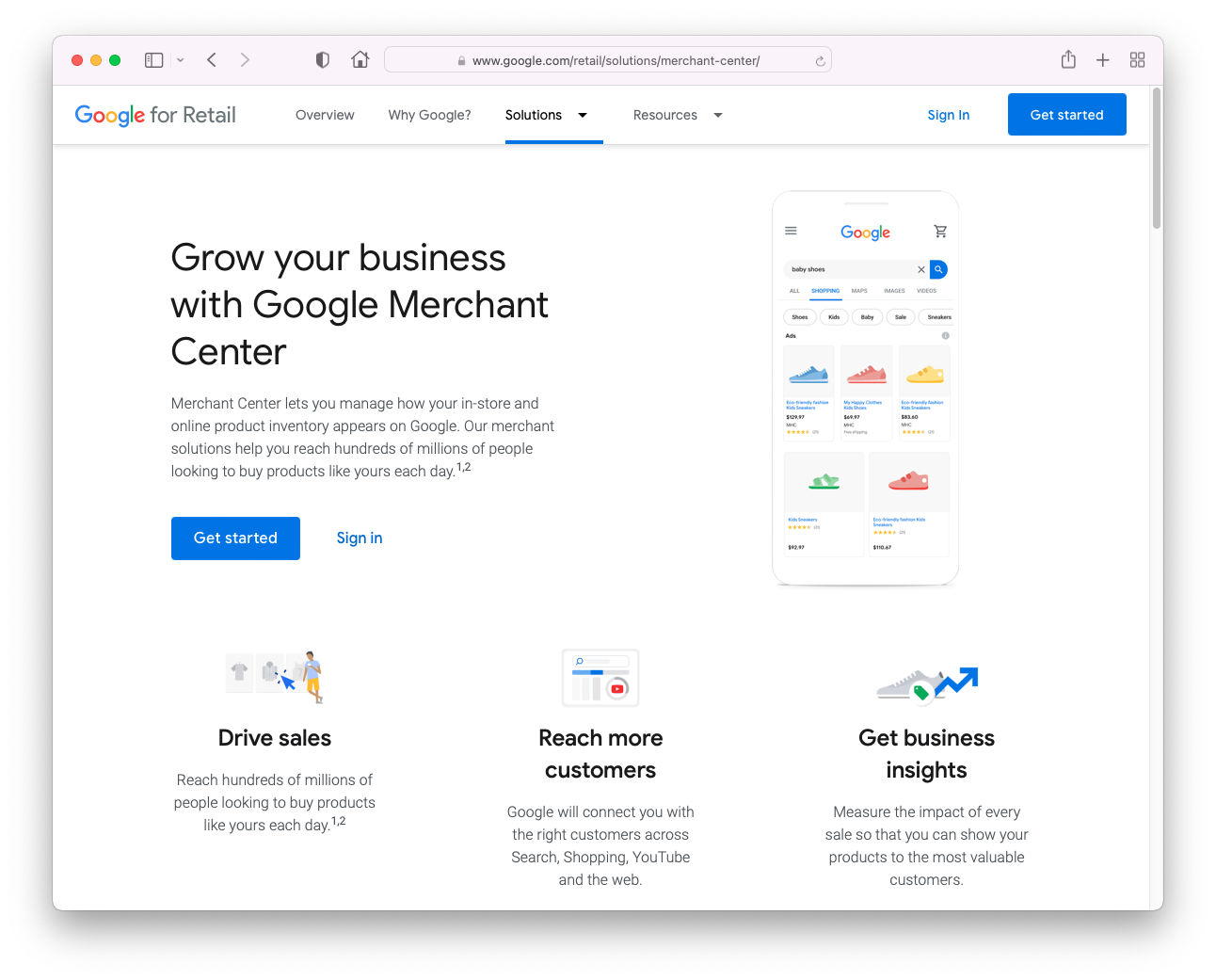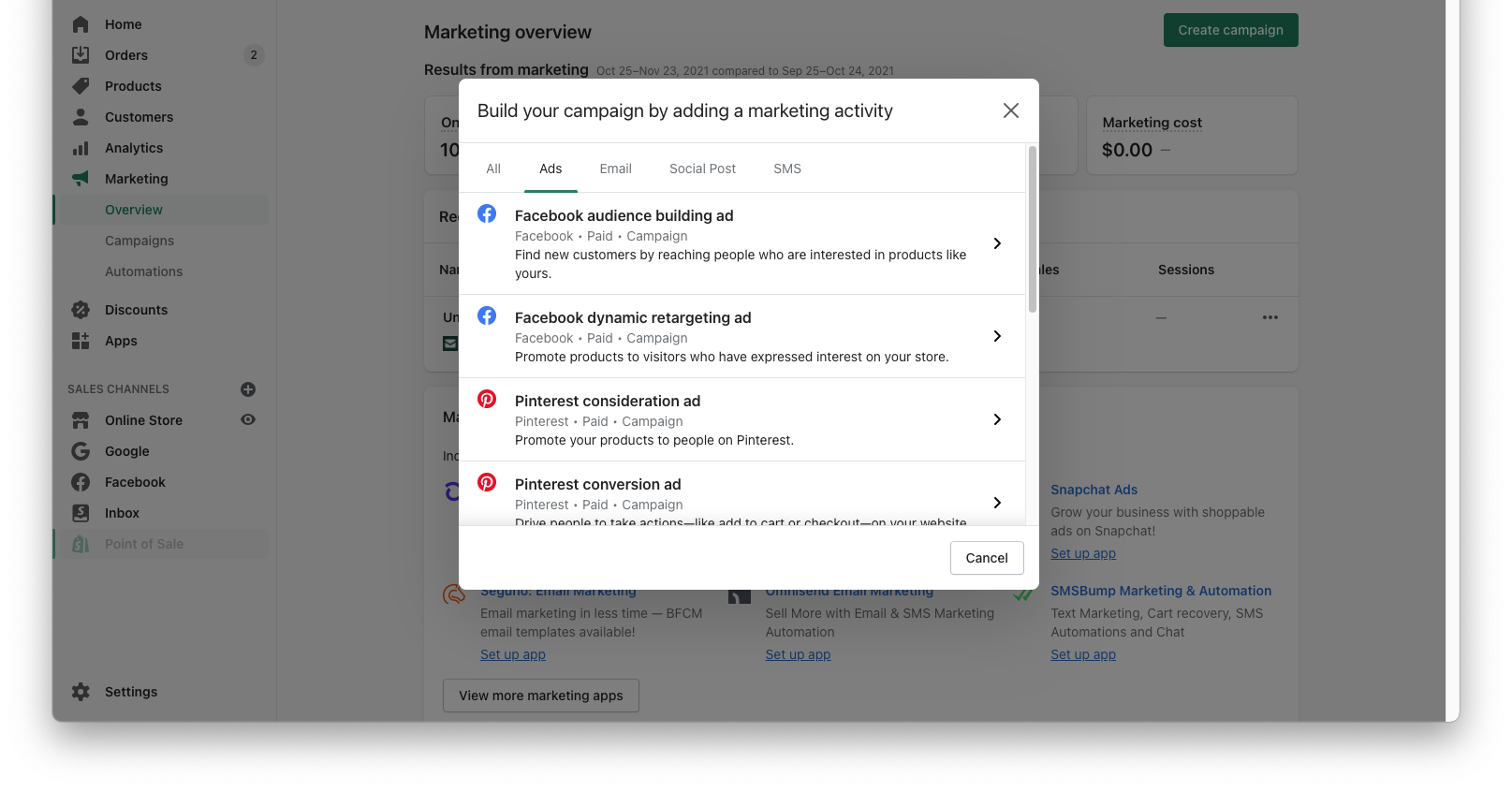There are many hard pills to swallow in life and business. Let me share one with you.
As much as you want it to be true, having an online store powered by Shopify doesn’t automatically entail success.
Sure, we read about many success stories and it can be tempting to think the same will happen to all of us. But simply using Shopify alone doesn’t move product.
The platform only plays a supporting role.
However, when Shopify is paired with the right tools, it can indeed be integral to your online success.
More and more, we’re seeing brands of all sizes and types choosing Shopify for a whole variety of reasons. It’s easy to use, is frequently updated and there’s an entire community of people out there willing to provide support when you need it.
It’s also really easy and simple to integrate with a whole variety of other apps and tools.
But for many, one challenge remains: How do you put your online store in front of as many potential customers as possible?
That’s where Google Ads comes in. The combination of Shopify and Google Ads is truly a match made in heaven (when managed properly).
So, how do you advertise your Shopify store and where do you start?
Planning For Shopify Success
Given the relative ease with which you can begin marketing your Shopify store (more on that in a moment), it can be easy to forget that a well-thought out strategy and detailed plan are both essential.
This is without a doubt the first and most important step.
Without a plan, you’ll realize it’s difficult to actually know what’s working and what isn’t when it comes to driving highly qualified traffic from Google Ads to your website, which converts into leads, sales, and revenue.
Once you’ve got a plan, it’s time to get going!
Shopping Campaigns For Shopify
If you’re new to Google Ads, with Shopify no doubt the best place to start is with Shopping Ads.
The process is easy and quick, and only requires a couple of steps which can be easily completed from within the Shopify interface itself.
Once you’re in Shopify’s Google channel, you can synchronise all of your products.
-
 Screenshot from Shopify, November 2021
Screenshot from Shopify, November 2021
This means they will be automatically pushed to the Google Merchant Center, allowing you to easily create Google Smart Shopping campaigns.
-
 Screenshot from Shopify, November 2021
Screenshot from Shopify, November 2021 - Note, if you don’t have a Merchant Center account yet, you will need one, but you can easily create it in Google in a couple of minutes.
-
 Screenshot from Google Merchant Center, November 2021
Screenshot from Google Merchant Center, November 2021
Another key to success with Shopping campaigns is the optimization of the product feed, so ensure that your product descriptions in Shopify are as accurate and keyword-rich as possible (no keyword stuffing allowed, though).
You can even synchronize the discounts that you create in Shopify to Google Ads.
And once the campaign is set up and live, Google will simply use its own automation and machine learning to optimize it.
Marketing In Shopify
Marketing for Shopify can also get you started with Facebook Ads.
This tool allows merchants to run Google Smart Shopping campaigns and Facebook ads natively, and track results directly in Shopify.
-
 Screenshot from Shopify, November 2021
Screenshot from Shopify, November 2021
Just as a side note, however, while it’s a great place to start, I encourage you to take the time to explore these channels directly from within their own platforms.
This is because you’re better able to fine-tune the ads and optimize the campaigns and leverage more advanced targeting features.
Optimize Your Shopping Campaigns
After you synchronize your products, Google will add them all into a single ad group by default.
However, you should take the time to review your product list and only advertise items that you know are likely to generate a positive ROI.
Everything else should be isolated in a separate ad group with a low priority, or simply excluded altogether.
Taking Advantage Of Enhanced Ecommerce Tracking
If you are using Google Analytics as your main analytics platform (and chances are this is most of you), you can leverage Enhanced Ecommerce tracking in Google Analytics to automatically create audience segments based on the customer journey and interaction with your website.
Basically, this grabs the low-hanging fruit – cart and checkout abandoners – into segments. It then deploys these audiences in Google Ads to create campaigns that target these users with compelling ads and offers.
Audience Targeting
With all of your marketing activity, you should make use of the platform’s testing features.
This means you’re not only able to innovate and experiment but also be proactive in responding to changes and fluctuations in the market.
In particular, you should make audience targeting one of the first priorities.
Google’s focus on the user (and, by reflection, audiences) has grown exponentially in the past few years. Understanding your customer should always be at the forefront of your mind.
After all, these guys are the ones keeping you in business, right?
Google allows you to test out how different segments respond to your ads and convert by setting audience targeting, or even just adding them in observation mode.
The latter is a great way to really get to know more about your existing and new customers.
Additionally, you can use and test different layers of audience targeting.
For example, you can use affinity audiences to look for users based on their interests, or in-market audiences to target warm leads and ready-to-buy users.
The Best User Experience Starts From The First (Ad) Impression
Don’t underestimate or downplay the importance of the actual ads.
In life, it’s often the first impression that matters the most and ad impressions are no different.
Undercooked, rushed, or generally poor ad text and ad creative won’t help you to cut through the noise. It also means you miss out on showing potential customers that you’re the better option when they are actively looking for products you stock.
Ensure big selling points such as free shipping and easy returns are clear and easy to understand.
Then, if possible, enhance the ad with a campaign landing page optimized for conversions. Shopify provides many different ways of creating landing pages, including the use of external tools and page builder apps from its own app store.
Dynamic Search Ads (DSA)
I’ll be the first to admit that only a few years ago, DSAs were certainly not among my favorite ways of creating ad campaigns.
Since then, however, Google’s machine learning has made a giant leap forward and the performance of these ads is now massively better.
Combine that with the fact it’s now nearly impossible to predict and cover all the possible terms and phrases people might use to search and find your products, and DSAs are quickly becoming one of the last few secret tools in the search experts’ kit.
They can be particularly useful for Shopify merchants with large inventories as DSA can really help to clean up on the long tail and drive cost-efficient incremental sales that you’re otherwise likely to miss.
Retargeting: Check! But How About Cross-Selling?
We get it. Selling is hard graft, and so we are often quite content to be able to just close the deal and move on to the next customer.
But how about the opportunity to increase your customers’ lifetime value (LTV) and offer them the opportunity to buy more from you?
Stop thinking about retargeting as a way to just engage with website visitors that have not converted and start thinking more about using your customer lists.
Luckily, this is an easy task for Shopify customers.
From the Shopify interface, you simply go to the Customers section and find the left-hand side menu.
From there, choose to export all your customers and modify the downloaded file to make it fit the format required to upload it into Google.
-
 Screenshot from Shopify, November 2021
Screenshot from Shopify, November 2021
Then, go to the Audience Manager section within the Shared Library under Tools in Google Ads, and proceed with the upload following the prompts.
-
 Screenshot from Google Ads, November 2021
Screenshot from Google Ads, November 2021
Once done, your customer list will be ready for use and allow you to target or suppress those that Google can match. It will also create lookalike audiences (similar audiences) in Google.
Break Free From Caps
Don’t let your success be limited by budget caps. Instead, let your marketing be guided by its profitability and ultimately only work towards your target ROI.
We often see marketers and brands limiting their chances to grow their business by allocating fixed budgets.
Think about it. If spending $1 on Google Shopping is returning you $5 or $6 even after taking off the cost of goods, marketing costs, etc., why wouldn’t you increase the investment?
Elevate Your Campaigns With A Multi-Channel Strategy
Google Ads can really open your Shopify store to the world helping to reach users actively searching for your products and engage with them with the right message at the right time.
But if you really want to take things to the next level and elevate your campaigns you should consider a multi-channel strategy.
For example, you could create prospecting campaigns in Facebook by creating target audiences based on demographics, interest, behavior or using your own lists.
Then, retarget those that have expressed a strong interest in your products but haven’t converted yet through Google Ads.
Or, you could use Facebook and Instagram Ads to retarget those users that have visited your website after clicking from one of your ads in Google.
How to Choose the Best Shopify Theme for SEO
The options – and opportunities – are endless!
Develop A Full Funnel Strategy
While it’s easier for ecommerce marketers to focus on bottom-of-the-funnel campaigns targeting sales, revenue and ROI, it is important to remember that Google Ads can offer much more than Shopping and Search ads.
Within the same interface, advertisers also have the capability to create ads and campaigns that can help generate awareness and consideration.
An example of this could be placing ads on YouTube, Gmail or the Discovery feed.
Conclusion
We started off with a quick reality check, and I’m going to finish with one, too.
All businesses are different. Therefore, what works for some people might not work for you.
To achieve success, you should really get personally acquainted with the Google Ads platform. This will help you better understand what triggers your target audience and how to leverage the ads and campaigns to achieve your objectives.
At the end of the day, it’s your business and its success is up to you! Put in the hard work learning the platform now, and you’ll reap the rewards later on.
More resources:
- How to Choose the Best Shopify Theme for SEO
- Top 10 Shopify SEO Apps & Tools to Supercharge Organic Performance
- Shopify & Fast Simon: An Ecommerce SEO Case Study
Featured Image: Shutterstock/Kaspars Grinvalds





![AI Overviews: We Reverse-Engineered Them So You Don't Have To [+ What You Need To Do Next]](https://www.searchenginejournal.com/wp-content/uploads/2025/04/sidebar1x-455.png)